The Dogo Argentino is a powerful, intelligent, and loyal breed that thrives with proper care and attention. Originally bred for hunting and guarding, this muscular dog requires a well-balanced approach to health, training, exercise, and socialization. Owners must understand the breed’s unique needs to ensure a happy and healthy life.
Caring for a Dogo Argentino goes beyond feeding and grooming. You need to focus on structured training, regular health check-ups, and mental stimulation to keep your dog well-behaved and content. Without the right care, this breed’s strong-willed nature can lead to behavioral issues. A proper diet, consistent exercise, and positive reinforcement training will help your Dogo Argentino develop into a well-rounded companion.
In this guide, you’ll find ten proven care tips that cover everything from nutrition and exercise to training and grooming. By following these expert-backed strategies, you can give your Dogo Argentino the best life possible while strengthening the bond between you and your loyal canine companion.
Essential Health Care for Your Dogo Argentino
Common Health Issues to Watch For
Dogo Argentinos are strong and athletic, but they are prone to several genetic and breed-specific health issues. Responsible owners must stay informed and proactive to keep their dogs healthy.
- Hip Dysplasia – This common condition affects many large breeds, including the Dogo Argentino. It occurs when the hip joint doesn’t develop properly, leading to pain, mobility issues, and arthritis over time. Regular exercise, weight management, and joint supplements can help reduce the risk.
- Deafness – Many Dogo Argentinos carry a genetic predisposition for deafness, especially those with all-white coats. Breeders often test puppies using the Brainstem Auditory Evoked Response (BAER) test to determine hearing ability. If you own a deaf Dogo Argentino, training with hand signals and maintaining a structured routine will help manage their condition.
- Skin Allergies & Irritations – The breed’s short, white coat makes them sensitive to sunburn and skin irritations. Allergies to food, pollen, or environmental factors can cause excessive scratching, rashes, or hot spots. Using hypoallergenic shampoos, providing a high-quality diet, and limiting sun exposure can help protect their skin.
- Heart Disease – Some Dogo Argentinos develop congenital heart conditions such as dilated cardiomyopathy. Regular veterinary check-ups and a heart-healthy diet can help detect and manage heart-related issues early.
- Bloat (Gastric Dilatation-Volvulus) – Large, deep-chested breeds face a higher risk of bloat, a life-threatening condition where the stomach twists and traps gas inside. Feeding smaller, frequent meals and avoiding intense exercise right after eating can help prevent this dangerous condition.
Routine Vet Check-Ups & Vaccinations
Regular vet visits ensure that your Dogo Argentino stays in peak health. A trusted veterinarian can detect early signs of illness, recommend preventive care, and guide you on the best health practices for your dog.
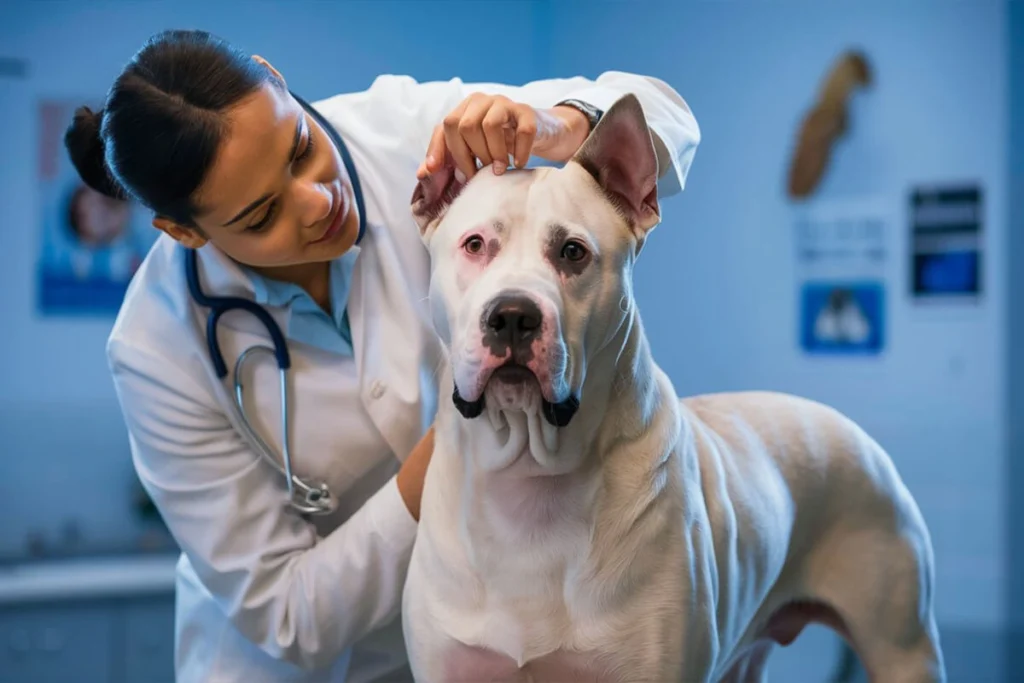
- Annual Health Exams – Schedule at least one full veterinary check-up per year, but consider biannual visits as your dog ages. These exams assess overall health, dental condition, weight, and organ function.
- Core Vaccinations – Protect your Dogo Argentino from dangerous diseases by keeping up with core vaccinations, including rabies, distemper, parvovirus, and adenovirus. Puppies require a series of shots, followed by booster vaccinations throughout their lives.
- Parasite Prevention – Fleas, ticks, heartworms, and intestinal parasites pose serious health risks. Monthly preventatives keep your dog protected from these common threats.
- Dental Care & Cleanings – Dental disease can lead to infections and serious health complications. Brushing your dog’s teeth at home and scheduling professional cleanings prevent plaque buildup and gum disease.
- Senior Dog Health Screenings – As your Dogo Argentino ages, additional screenings for arthritis, organ function, and cognitive decline become essential. Early intervention helps maintain a good quality of life in their senior years.
Best Supplements for Large Breeds
Providing the right supplements helps support your Dogo Argentino’s overall health, particularly their joints, immune system, and digestion.
- Glucosamine & Chondroitin – These joint-supporting compounds promote cartilage health and reduce the risk of arthritis, especially in large breeds prone to hip and elbow dysplasia.
- Omega-3 Fatty Acids – Found in fish oil, omega-3s support healthy skin, a shiny coat, and reduced inflammation in joints and organs. This is especially beneficial for dogs with allergies or joint issues.
- Probiotics & Digestive Enzymes – A strong digestive system improves nutrient absorption and supports immune function. Probiotics help maintain a healthy gut microbiome, preventing digestive issues like bloating or diarrhea.
- Multivitamins – High-quality multivitamins provide essential nutrients that may be missing from a regular diet. Look for formulas designed specifically for large breeds.
- Antioxidants – Supplements rich in vitamins C and E help reduce cellular damage and support immune function, especially in aging dogs.
Choosing high-quality, vet-approved supplements ensures your Dogo Argentino receives the best possible care. Always consult with your veterinarian before adding new supplements to your dog’s routine to ensure proper dosage and effectiveness.
Proper Nutrition & Diet Plan
Best Food for Dogo Argentino
Feeding your Dogo Argentino a high-quality, well-balanced diet plays a crucial role in maintaining their strength, energy, and overall health. Because they are muscular, high-energy dogs, they require a nutrient-rich diet that supports their active lifestyle.
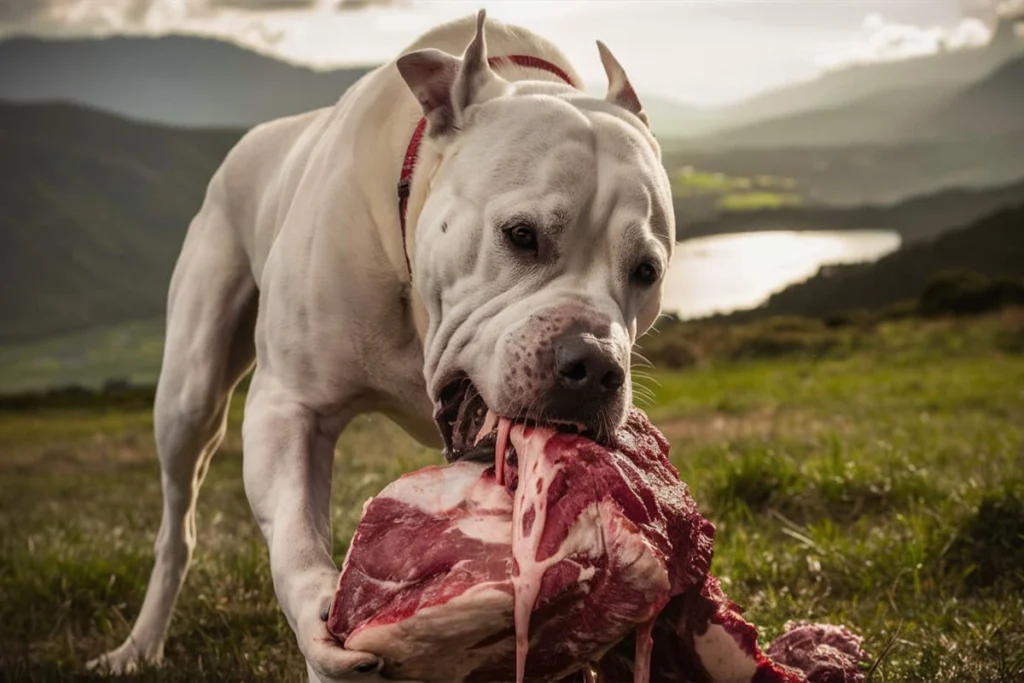
- High-Protein Diet – Dogo Argentinos thrive on a protein-rich diet that supports muscle development and overall strength. Look for dog food with real meat as the first ingredient, such as chicken, beef, turkey, or fish. Ideally, their diet should contain at least 25-30% protein.
- Healthy Fats – Essential fatty acids, like omega-3 and omega-6, promote healthy skin, a shiny coat, and joint support. Good sources include fish oil, flaxseed, and animal fats. Ensure their diet contains at least 12-15% healthy fats.
- Complex Carbohydrates – While protein remains the priority, complex carbs provide sustained energy. Sweet potatoes, brown rice, and quinoa offer digestible sources of fiber and help maintain stable blood sugar levels. Avoid excessive fillers like corn, wheat, or soy.
- Essential Vitamins & Minerals – A balanced diet should include essential nutrients like calcium, phosphorus, and zinc for strong bones and a healthy immune system. Fruits and vegetables, such as blueberries, carrots, and spinach, supply antioxidants and essential vitamins.
- Raw vs. Kibble Debate – Some owners prefer a raw diet that includes raw meat, bones, and organs, believing it mimics their ancestral diet. Others stick to high-quality kibble or a combination of both. Consult a veterinarian to determine the best approach based on your dog’s health and lifestyle.
Dogo Argentino Diet Plan
Establishing a proper feeding schedule and portion control helps maintain a healthy weight and prevents digestive issues.
- Puppy Diet (8 Weeks – 12 Months)
- Puppies require higher calorie intake for growth and development.
- Feed 3-4 small meals per day.
- Choose a high-protein puppy formula that supports bone and muscle growth.
- Adult Diet (1 Year – 7 Years)
- Transition to two balanced meals per day.
- Maintain a diet with 25-30% protein and moderate fat levels.
- Adjust portion sizes based on activity level (working dogs may need more calories).
- Senior Diet (7+ Years)
- Older Dogo Argentinos may require a lower-calorie diet to prevent obesity.
- Joint-supporting ingredients, like glucosamine and omega-3s, become essential.
- Consider softer foods or adding bone broth to meals for easier digestion.
- Hydration Matters
- Provide fresh, clean water at all times to support digestion and kidney health.
- Wet food or broth can increase hydration for dogs that don’t drink enough water.
Foods to Avoid
Feeding the wrong foods can cause serious health issues, ranging from mild digestive upset to life-threatening conditions. Always keep these harmful foods away from your Dogo Argentino:
- Toxic Foods
- Chocolate – Contains theobromine, which can cause seizures, rapid heart rate, and poisoning.
- Grapes & Raisins – Can lead to sudden kidney failure, even in small amounts.
- Onions & Garlic – Destroys red blood cells and causes anemia, leading to weakness and fatigue.
- Xylitol (Artificial Sweetener) – Found in sugar-free gum and snacks, it triggers a rapid insulin release, leading to hypoglycemia (low blood sugar).
- Harmful Table Scraps
- Cooked Bones – Splintering bones can cause choking hazards and internal injuries.
- Fatty Foods (Bacon, Fried Foods, etc.) – Excess fat can cause pancreatitis, leading to severe stomach pain and vomiting.
- Excess Dairy – Many dogs are lactose intolerant, leading to bloating and diarrhea.
- Unhealthy Fillers & Preservatives
- Excessive Corn, Wheat, & Soy – These ingredients provide little nutritional value and can cause allergies.
- Artificial Additives & Preservatives – Chemical preservatives like BHA and BHT have been linked to health issues.
By choosing the right food, following a structured diet plan, and avoiding harmful ingredients, you can ensure your Dogo Argentino stays healthy, active, and full of life. Always consult with a veterinarian before making major changes to your dog’s diet.
Exercise & Mental Stimulation
Ideal Exercise for Dogo Argentino
Dogo Argentinos need consistent, high-energy exercise to stay physically fit and mentally stable. Their strong, muscular bodies and working-dog heritage demand more than just a short walk around the block. Without proper exercise, they can develop frustration, anxiety, and destructive behaviors.
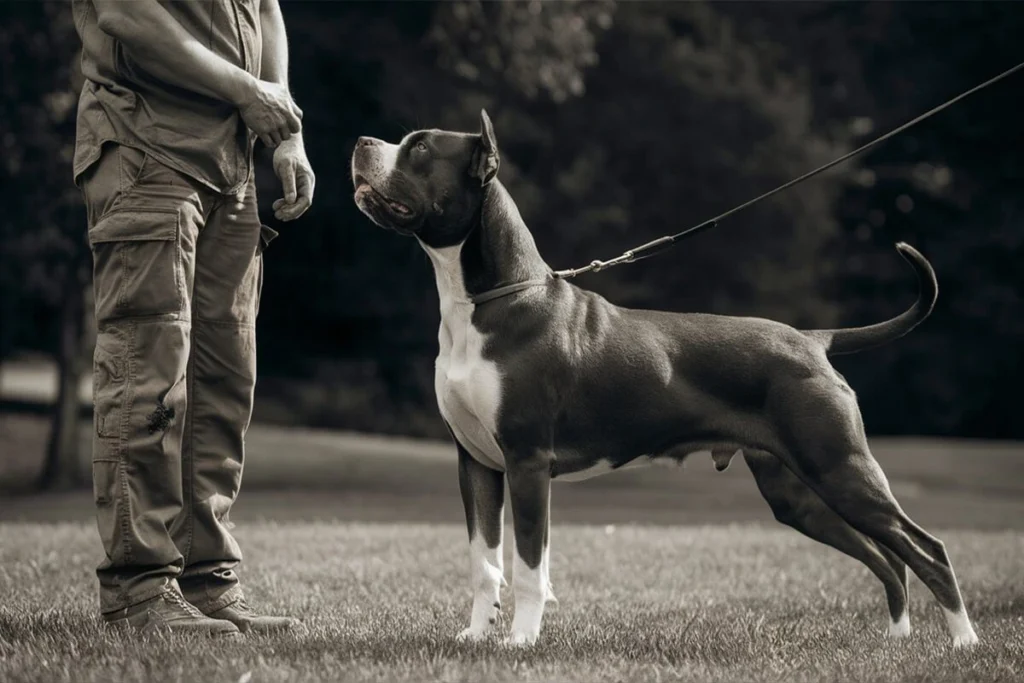
- Daily Exercise Requirements – Aim for at least 60–90 minutes of physical activity every day. Split their exercise into multiple sessions to keep their energy levels balanced throughout the day.
- Running & Jogging – Dogo Argentinos make excellent running partners. Take them on daily jogs or runs to help them burn off energy while strengthening their endurance and muscles.
- Hiking & Trail Adventures – Their athleticism and adventurous spirit make them great hiking companions. Choose rugged trails with inclines to challenge their muscles and improve agility.
- Agility Training – You can create an agility course in your backyard or sign them up for agility classes.. Jumping hurdles, weaving through poles, and navigating tunnels provide excellent physical and mental exercise.
- Swimming – If your Dogo Argentino enjoys water, swimming provides a low-impact, full-body workout that strengthens muscles while being gentle on the joints.
- Tug-of-War & Fetch – Playing tug-of-war builds strength and reinforces training commands like “drop it.” Fetch engages their prey drive while offering controlled exercise.
Adjust their activity levels based on age, health, and weather conditions. Puppies require shorter play sessions to avoid joint strain, while senior dogs benefit from low-impact activities like swimming and shorter walks.
Mental Stimulation Activities
Keeping a Dogo Argentino’s mind active is just as important as physical exercise. Their intelligence and problem-solving skills thrive when given engaging tasks. Without mental stimulation, they may become bored and resort to unwanted behaviors like excessive barking or chewing.
- Obedience Training – Work on commands like “sit,” “stay,” “come,” and “heel” daily. Practicing obedience training sharpens their focus and reinforces their bond with you.
- Puzzle Toys & Treat Dispensers – Interactive toys challenge their problem-solving skills and keep them occupied. Fill puzzle toys with treats to encourage independent playtime.
- Scent Work & Nose Games – Hide treats or favorite toys around the house or yard, and encourage your dog to find them using their nose. This taps into their natural hunting instincts.
- Flirt Pole Exercises – A flirt pole mimics prey movement, allowing them to chase and “catch” an object attached to a pole. This activity satisfies their high prey drive in a controlled setting.
- Advanced Trick Training – Teach your Dogo Argentino new tricks beyond basic commands, like rolling over, shaking paws, or picking up specific items. Challenging their mind strengthens their cognitive abilities.
- Socialization Outings – Take them on trips to dog-friendly stores, parks, and events to expose them to different environments and experiences. This prevents anxiety and encourages positive behavior in new settings.
Rotate mental stimulation activities to prevent boredom and keep them excited to learn. A mentally engaged Dogo Argentino remains happy, well-behaved, and confident.
Managing Protective Instincts with Exercise
Dogo Argentinos possess strong protective instincts, making them excellent guard dogs but also requiring structured exercise to manage their natural guarding tendencies. Exercise helps channel their protective energy into positive behaviors, preventing aggression or overprotectiveness.
- Leash-Controlled Walks in New Environments – Walk them in different settings where they can encounter new people, animals, and sounds. This helps them differentiate between real threats and everyday encounters.
- Controlled Play with Other Dogs – Proper socialization reduces territorial behavior. Arrange playdates with well-behaved dogs to reinforce positive interactions.
- Impulse Control Training During Exercise – Teach commands like “leave it” or “watch me” while exercising. These commands train them to focus on you instead of reacting impulsively to strangers or distractions.
- Structured Guard Dog Training (If Needed) – If you want your Dogo Argentino to serve as a guard dog, work with a professional trainer to develop controlled protective behaviors. Never encourage uncontrolled aggression.
- Treadmill Training for Focused Energy Release – On days when outdoor activity isn’t possible, treadmill training provides an excellent way to drain excess energy while reinforcing structured behavior.
Balancing protective instincts with proper exercise ensures your Dogo Argentino remains a confident, well-mannered companion rather than an overly territorial or anxious dog. Through consistent training and a structured exercise routine, you can help them develop into a calm yet vigilant guardian.
Training & Socialization Strategies
How to Train a Dogo Argentino
Training a Dogo Argentino requires consistency, patience, and a firm yet positive approach. These dogs have strong intelligence and natural leadership tendencies, so owners must establish clear rules and expectations from the start.
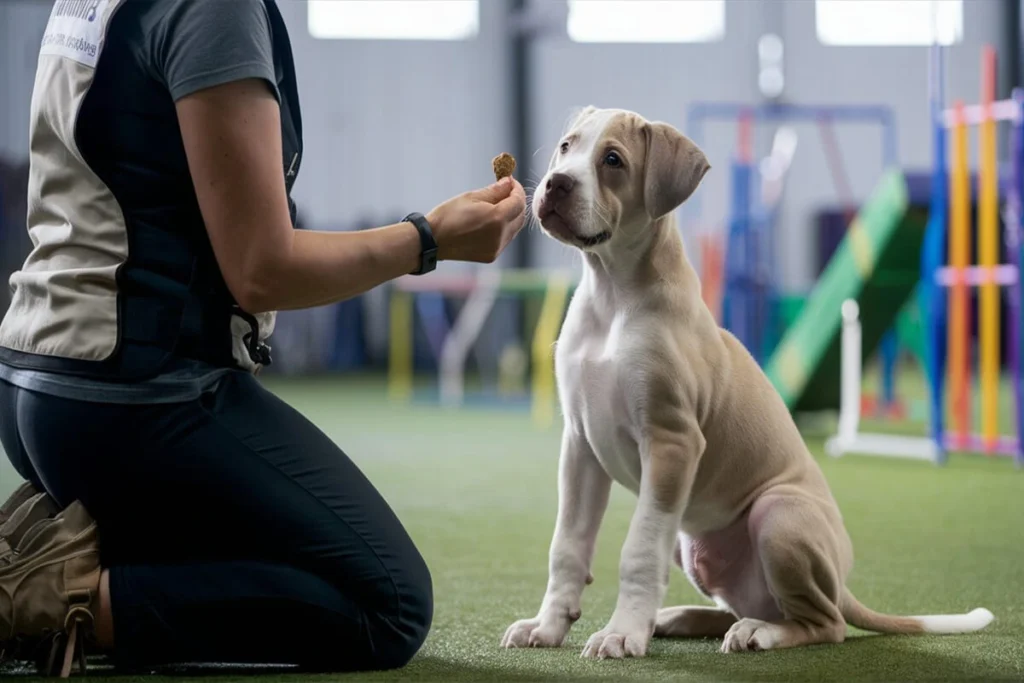
- Start Early & Stay Consistent – Begin training as early as 8 weeks old to set good habits. Puppies learn quickly, and early lessons prevent bad behaviors from developing. Always use the same commands and rules to prevent confusion.
- Use Positive Reinforcement – Reward-based training works best for Dogo Argentinos. Praise, treats, and toys reinforce good behavior, making them more eager to obey commands. Avoid harsh punishments, which can lead to fear or aggression.
- Establish Leadership – Set yourself as the leader through calm, confident, and consistent training. Always give commands in a firm but non-threatening tone. Never let them control situations, such as pulling on the leash or refusing commands.
- Teach Basic Obedience Commands – Focus on essential commands like “sit,” “stay,” “down,” “come,” and “heel.” Practice these daily to strengthen their response and reliability.
- Leash Training for Control – Dogo Argentinos have strong prey drives and protective instincts. Show them how to walk nicely on a leash without pulling. Use commands like “heel” and stop walking when they pull forward.
- Crate Training for Structure – A crate provides a safe space and helps with potty training. Introduce the crate as a positive place, never as a punishment. Use it for short periods when you cannot supervise them.
- Impulse Control Exercises – Teach commands like “leave it,” “wait,” and “place” to manage their excitement and instincts. Practicing impulse control prevents them from chasing, jumping, or reacting aggressively.
- Advanced Training for Mental Stimulation – Once they master the basics, challenge them with more complex commands, agility training, or working tasks.
Training must remain an ongoing process throughout their lives. If challenges arise, work with a professional trainer experienced in large, strong-willed breeds like the Dogo Argentino.
Socialization Tips for a Well-Behaved Dog
Proper socialization shapes a Dogo Argentino into a confident, friendly, and well-adjusted companion. Without early exposure to different environments, people, and animals, they may develop fear-based aggression or excessive territorial behavior.
- Expose Them to New Environments – Take your Dogo Argentino to different places, including parks, busy streets, pet-friendly stores, and outdoor events. This helps them become comfortable with various sights, sounds, and smells.
- Introduce New People Gradually – Invite friends and family members to interact with your dog in a controlled environment. Encourage them to offer treats and positive reinforcement so your dog associates strangers with good experiences.
- Encourage Positive Dog Interactions – Arrange playdates with well-socialized dogs of similar size and temperament. Supervise their play to ensure they learn appropriate social cues and avoid dominance issues.
- Manage Protective Instincts Around Strangers – Teach your dog that not every visitor is a threat. Have guests ignore them initially and reward calm behavior. Never allow them to bark excessively or lunge at new people.
- Avoid Overexposure to Overwhelming Situations – If your dog shows signs of fear or aggression, step back and slow the socialization process. Gradually build confidence instead of forcing interactions.
- Use Positive Reinforcement for Calm Behavior – Reward your dog when they remain relaxed in social situations. If they react negatively, redirect their attention with commands or treats.
Socialization should continue throughout their life. The more positive experiences they have with different people, animals, and environments, the more adaptable and well-mannered they become.
Handling the Dogo Argentino Temperament
Dogo Argentinos possess a unique combination of loyalty, intelligence, and protective instincts. While they are loving and affectionate with their families, their dominant and strong-willed nature requires careful management.
- Balance Affection with Discipline – Dogo Argentinos form deep bonds with their owners, often becoming affectionate and eager to please. However, they need structure and clear boundaries to prevent them from developing stubborn or pushy behaviors.
- Provide Plenty of Exercise & Mental Stimulation – A bored Dogo Argentino can become destructive or restless. Daily exercise and engaging tasks keep them mentally and physically satisfied.
- Manage Their Protective Instincts – While they make excellent guard dogs, you must ensure their protective nature doesn’t turn into aggression. Teach them to tell the difference between real dangers and safe situations. Never encourage excessive guarding behaviors.
- Stay Confident & Assertive – Dogo Argentinos respond best to owners who display calm confidence. If they sense weakness or inconsistency, they may try to take control. Always enforce rules with firm but fair leadership.
- Recognize Signs of Aggression & Address Them Early – Watch for warning signs like stiff body posture, growling, or excessive territorial behavior. Correct unwanted behaviors immediately using redirection and structured training. If necessary, seek guidance from an experienced trainer.
- Adapt Training & Care as They Age – Puppies often display playful energy, while adults settle into their protective instincts. Senior Dogos may require gentler training methods and adjusted exercise routines. Stay aware of their changing needs.
Understanding and managing their temperament helps create a balanced and well-behaved companion. A well-trained, properly socialized Dogo Argentino becomes a loyal, protective, and loving member of the family.
Grooming & Hygiene Care
Dogo Argentino Grooming Basics
Dogo Argentinos have a short, smooth coat that requires minimal grooming, but regular maintenance keeps their skin and coat healthy. Their white fur makes dirt and stains more visible, so routine care prevents dullness and keeps them looking their best.
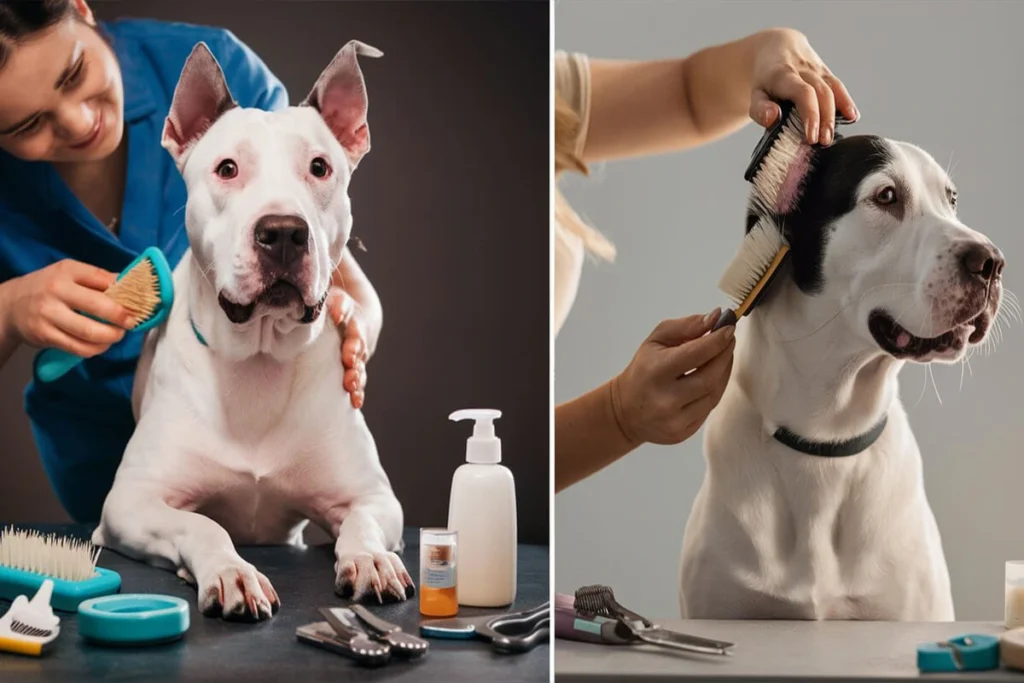
- Brushing for a Healthy Coat – Even though their coat is short, brushing once or twice a week removes loose hair, distributes natural oils, and keeps their skin healthy. Use a rubber curry brush or soft-bristle brush to remove dirt and dead hair.
- Bathing Routine – Bathe your Dogo Argentino every 6–8 weeks, or as needed if they get dirty. Use a gentle, dog-specific shampoo to avoid stripping their natural oils. Overbathing can cause dry skin, so always rinse thoroughly to remove any soap residue.
- Skin Care & Allergy Awareness – Their white coat makes them more prone to sunburn and skin allergies. Apply dog-safe sunscreen on their nose and exposed areas if they spend time in the sun. Check for any signs of irritation, redness, or hot spots, as Dogos can be prone to allergic reactions and sensitive skin.
- Shedding Management – They are moderate shedders, with increased shedding during seasonal changes. Regular brushing minimizes loose hair and keeps their coat looking clean.
- Paw & Pad Care – Inspect their paws regularly for cuts, cracks, or irritation, especially after outdoor activities. Moisturize their paw pads with dog-safe balm to prevent dryness and cracking.
Keeping up with basic grooming improves their coat’s shine, prevents irritation, and strengthens your bond with your dog.
Ear, Nail, and Dental Care
Dogo Argentinos need proper ear, nail, and dental care to prevent infections and maintain overall health. Neglecting these areas can lead to discomfort, pain, and serious health issues.
- Ear Cleaning for Infection Prevention
- Dogo Argentinos have folded ears, which can trap moisture and debris, increasing the risk of ear infections.
- Look at their ears every week. Check for any redness, bad smell, or too much wax build-up.
- Use a vet-approved ear-cleaning solution and a cotton pad to gently wipe the outer ear. Avoid inserting anything into the ear canal.
- If you notice frequent head shaking or scratching, consult a veterinarian.
- Nail Trimming for Healthy Movement
- Long nails affect posture, cause discomfort, and increase the risk of injury.
- Trim their nails every 3–4 weeks using a dog nail clipper or grinder. If you hear clicking sounds when they walk on hard surfaces, it’s time for a trim.
- Be careful not to cut the quick (the blood vessel inside the nail), as it can cause bleeding and pain. If unsure, a professional groomer or vet can trim them safely.
- Dental Hygiene for Long-Term Health
- Poor dental care leads to plaque buildup, gum disease, and bad breath. Brushing their teeth regularly prevents serious health issues.
- Brush their teeth 2–3 times a week using dog-friendly toothpaste and a soft toothbrush.
- Provide dental chews, raw bones, or chew toys that help remove plaque naturally.
- Schedule annual vet dental checkups to detect early signs of dental disease.
A well-maintained grooming routine keeps your Dogo Argentino comfortable and free from preventable health issues.
Seasonal Grooming Considerations
Each season brings different grooming challenges, and adjusting their care routine helps protect their skin, coat, and overall well-being.
- Spring & Fall Shedding Management
- Dogo Argentinos shed more as their coat transitions for temperature changes.
- Brush them more frequently (3–4 times a week) to remove loose fur and reduce shedding around your home.
- Summer Skin & Coat Protection
- Their short white fur offers little protection from the sun, making them prone to sunburn. Apply dog-safe sunscreen on exposed areas, especially their nose and ears.
- Keep their coat clean from dirt and sweat buildup by wiping them down with a damp cloth between baths.
- Provide plenty of water and shade during outdoor activities to prevent overheating.
- Winter Paw & Coat Care
- Their short coat offers minimal insulation, so they feel the cold more than thick-coated breeds. If temperatures drop significantly, use a dog sweater or coat for warmth.
- Road salt and ice can irritate their paw pads. Wash their paws after walks and apply paw balm to prevent cracking.
- Limit baths during winter to avoid drying out their skin. Instead, use dry shampoo or dog wipes to keep them fresh.
By adjusting grooming habits to suit the seasons, you ensure your Dogo Argentino remains comfortable, healthy, and happy year-round.
Conclusion
Caring for a Dogo Argentino requires dedication, consistency, and a deep understanding of their needs. These intelligent and powerful dogs thrive with proper training, a well-balanced diet, regular exercise, and consistent grooming.
Start by establishing strong training habits early on. Use positive reinforcement, set clear boundaries, and socialize them well to ensure they grow into well-behaved companions. Their diet and nutrition should include high-quality proteins, healthy fats, and essential vitamins to support their energy levels, muscle growth, and overall health. Avoid harmful foods and consider supplements for joint and coat care.
Daily exercise and mental stimulation are essential. Engage them in running, agility training, and problem-solving activities to keep them physically and mentally satisfied. Without enough activity, they can become restless and destructive.
Regular grooming and health care help prevent common issues. Brushing, ear cleaning, nail trimming, and dental care keep them comfortable and healthy. Routine vet check-ups and vaccinations protect them from serious health concerns.
By understanding their protective temperament and natural instincts, you can guide them into becoming loyal, well-balanced, and affectionate family members. With the right care, a Dogo Argentino will reward you with unwavering love, protection, and companionship for years to come.
Read About The Giant Dog “Bernese Mountain Dog“
Look for The Best Stuff For your Pet on PetMD Official
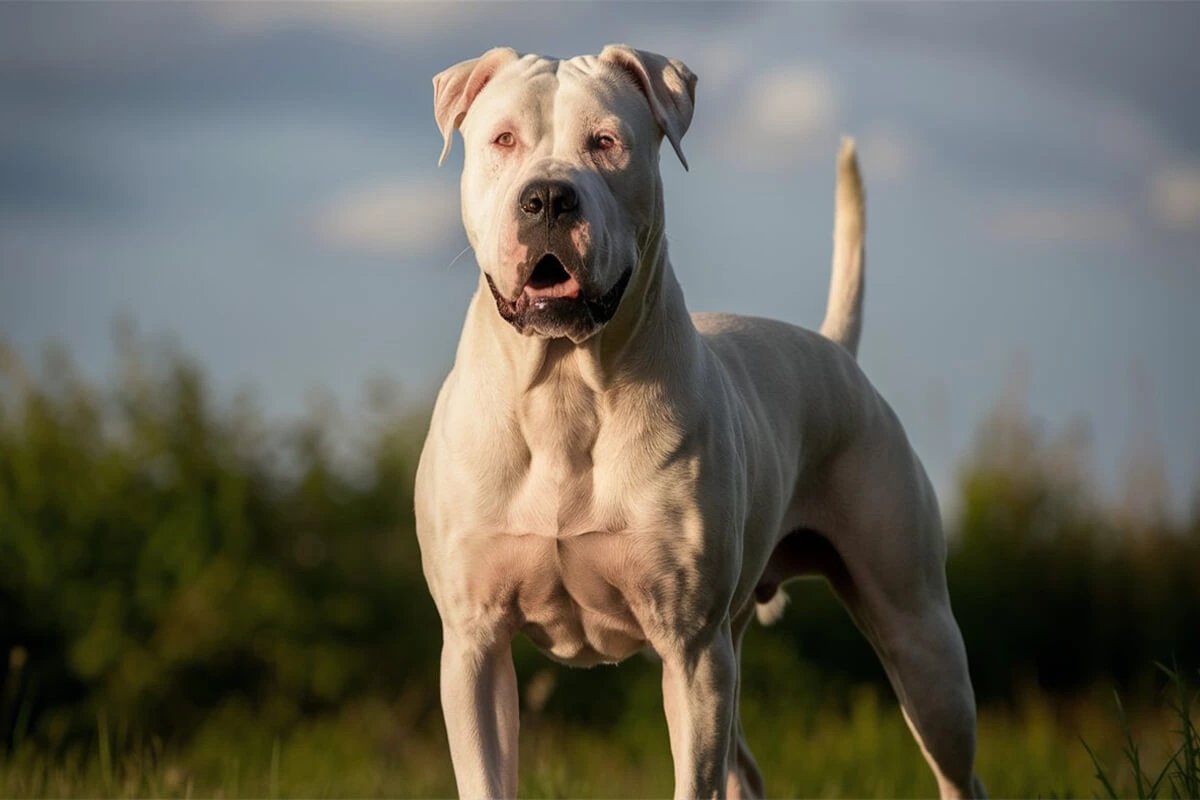
2 thoughts on “Top 10 Proven Dogo Argentino Care Tips for a Joyful, Healthy Life”
Comments are closed.